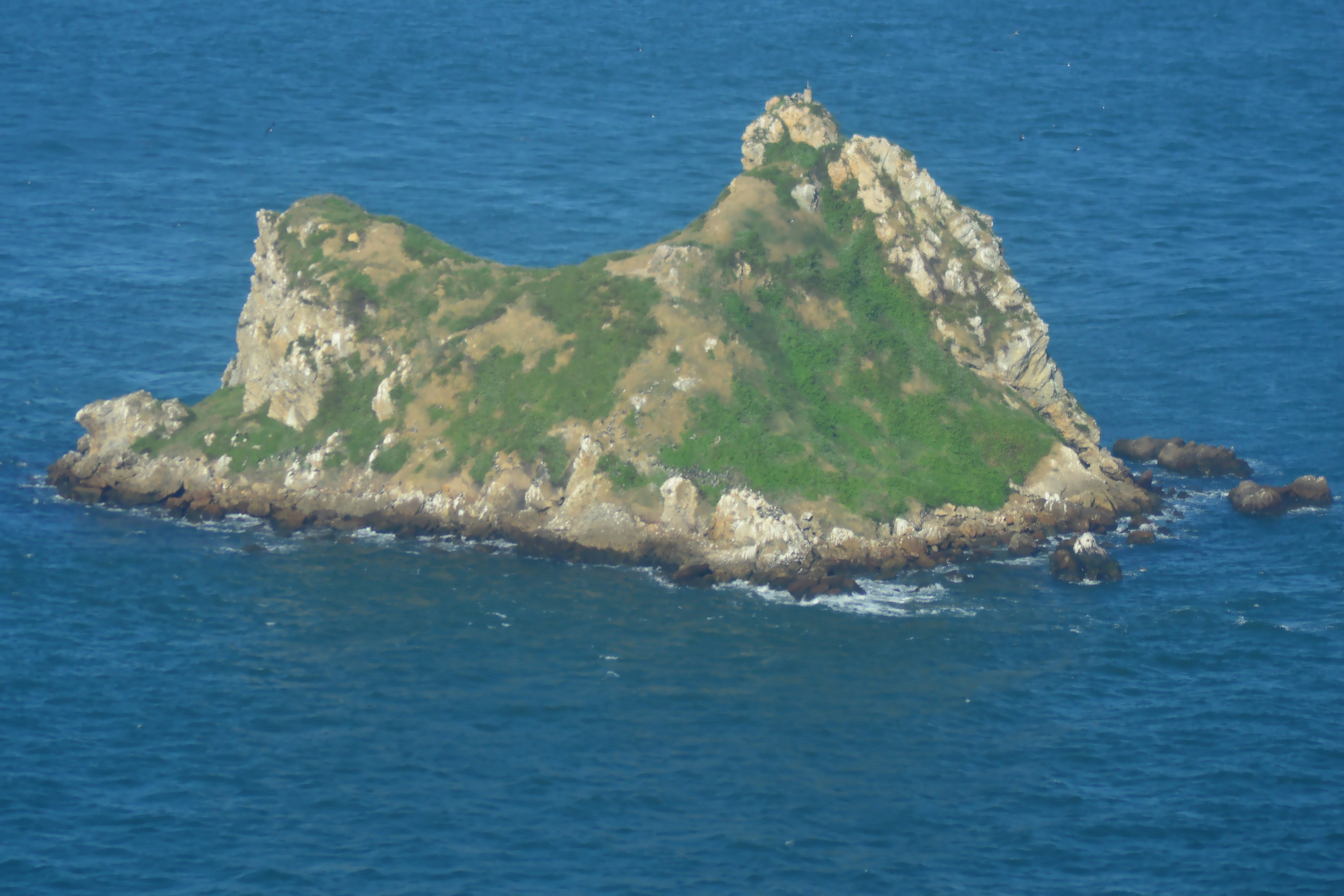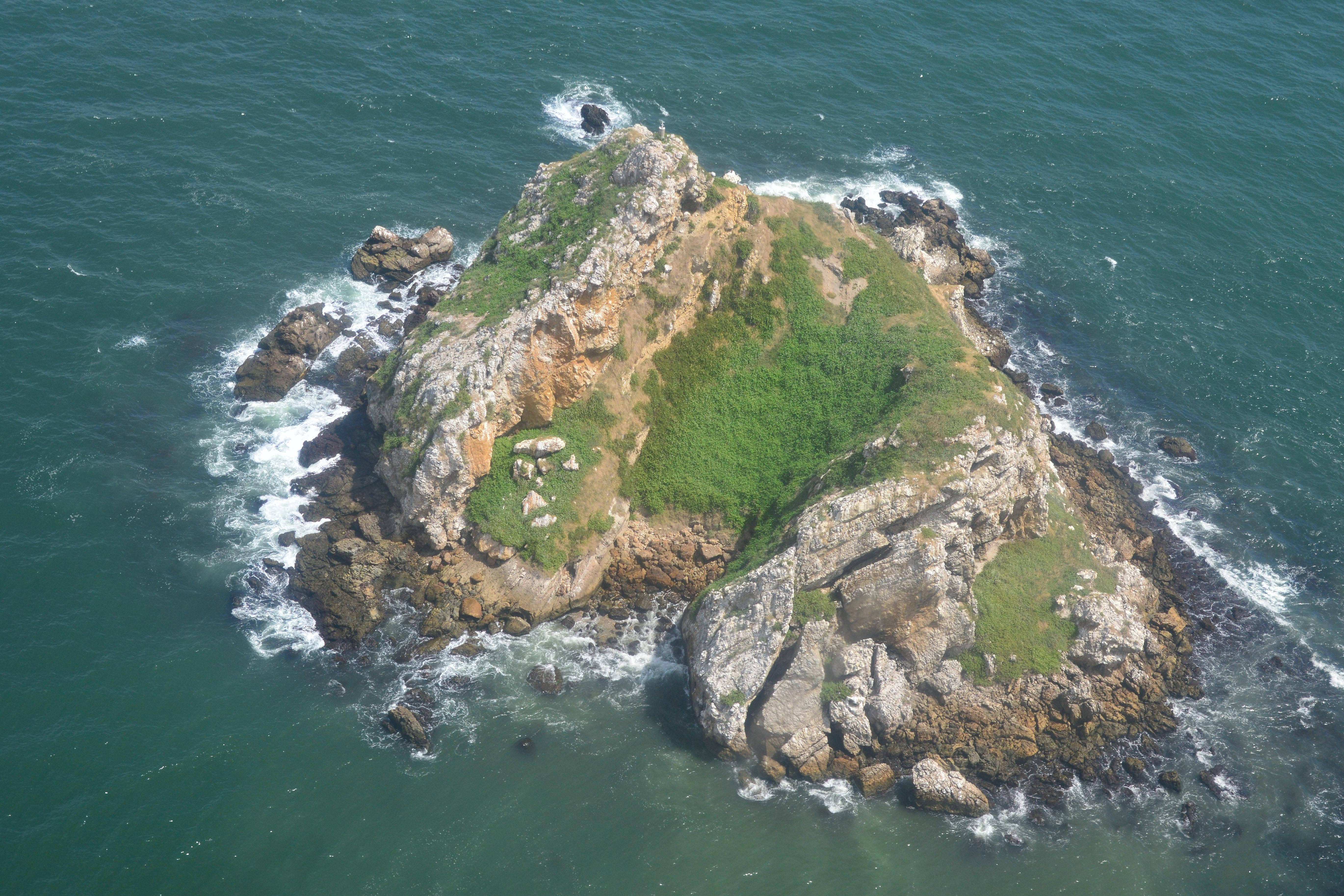Soldado Rock on:
[Wikipedia]
[Google]
[Amazon]
Soldado Rock or ''Soldier's Rock'', formerly known as ''Soldado Island'', is a small island in the Republic of Trinidad and Tobago. It is located in the Gulf of Paria 10 km off Icacos Point in TrinidadIUCN 1982, p.348 and north of the Venezuelan mainland. The island was originally a possession of the Venezuelan government, but became part of the territory of Trinidad and Tobago in 1942. The island is a wildlife sanctuary since being declared in 1934.




Characteristics
Soldado Rock is made up of limestone fossils from the Paleocene age and includes Eocene rock formations. The highest elevation point is 35 meters (115 ft) and its area is .IUCN 1982, p.349 Reefs surround the island to the east for 1.2 km (0.75 miles), and to the south-south east and south-east.Green 1885, p.84 There are no trees on the island but different types of vegetation including plumbago and portulaca. There are other small rock formations near the island, including ''Pelican Rock'' and ''Black Rock''.


History
Early history
On August 2, 1498, Christopher Columbus sailed near the island during his Third Voyage in the Serpent's Mouth and named the island ''El Gallo'' (Spanish for "The Cock").Joseph 1838, p.125 Columbus anchored near the island and encountered native Amerindians in canoes prior to landing on Trinidad for the first time. Its current name is derived from the Spanish word for "soldier". It was named in the 17th century after a Spanish boat shipwrecked near the island when a number of soldiers and sailors on board were rescued from the island. In the 19th century, it was also referred to as ''Île du Soldat'' (French
French (french: français(e), link=no) may refer to:
* Something of, from, or related to France
** French language, which originated in France, and its various dialects and accents
** French people, a nation and ethnic group identified with Franc ...
) as charted by Dauxion Lavaysse in 1813.
Wildlife sanctuary
The island was proclaimed a wildlife sanctuary in 1934 primarily for protection of seabirds granting it full legal protection by the Ministry of Agriculture, Forestry Division. Key species identified in the sanctuary protection include thesooty tern
The sooty tern (''Onychoprion fuscatus'') is a seabird in the family Laridae. It is a bird of the tropical oceans, returning to land only to breed on islands throughout the equatorial zone.
Taxonomy
The sooty tern was described by Carl Linnaeu ...
(''Onychoprion fuscatus'') and brown noddy (''Anous stolidus''). The island is a nesting ground for these species during the months of March and July. Other species noted on the island include the sandwich tern (''Thalasseus sandvicensis''), grey-breasted martin (''Progne chalybea''), magnificent frigatebird (''Fregata magnificens''), and brown booby
The brown booby (''Sula leucogaster'') is a large seabird of the booby family Sulidae, of which it is perhaps the most common and widespread species. It has a pantropical range, which overlaps with that of other booby species. The gregarious brow ...
(''Sula leucogaster'').
A subspecies of the short-tailed zygodont or common cane mouse (''Zygodontomys brevicauda soldadoensis'') was first identified on the island in 1965 and published in the American Museum of Natural History
The American Museum of Natural History (abbreviated as AMNH) is a natural history museum on the Upper West Side of Manhattan in New York City. In Theodore Roosevelt Park, across the street from Central Park, the museum complex comprises 26 inter ...
. Other animals observed on the island include the cane toad (''Rhinella marina'') and green iguana (''Iguana iguana'').
Ownership negotiations
After Trinidad became a British colony in 1797 from Spain, Soldado Rock remained a disputed territory between Venezuela and British Trinidad and Tobago.Baptiste 1988,p.136 Negotiations for settling the border dispute and defining the maritime boundary between the two countries began in 1939 and were led by geologist Hans Kugler. Negotiations were influenced by considerations for placing anti-submarine devices between Venezuela and T&T territory as World War II was underway. As part of the negotiated agreement, Venezuela would cede Soldado Rock to T&T for Patos Island in the Dragon's Mouth, located 4 km east of the Venezuelan mainland. The agreements were formalized on February 26, 1942, inCaracas
Caracas (, ), officially Santiago de León de Caracas, abbreviated as CCS, is the capital and largest city of Venezuela, and the center of the Metropolitan Region of Caracas (or Greater Caracas). Caracas is located along the Guaire River in the ...
.
Modern history
During World War II the island was used as target practice for bombing and machine guns, which led to some damage on the island. The areas around the island form part of the Southwest Soldado Field, a hydrocarbon area important to theoil and gas industry
The petroleum industry, also known as the oil industry or the oil patch, includes the global processes of exploration, extraction, refining, transportation (often by oil tankers and pipelines), and marketing of petroleum products. The largest ...
in Trinidad. It is estimated that 43 million barrels of oil
A barrel is one of several units of volume applied in various contexts; there are dry barrels, fluid barrels (such as the U.K. beer barrel and U.S. beer barrel), oil barrels, and so forth. For historical reasons the volumes of some barrel units ...
in proven reserves exist in the oilfield. Production of the oilfield first started in 1955.
The waters around Soldado Rock are popular for local fishermen due to an abundance of fish in the area, but are dangerous due to rapid tide changes and numerous rocks. The area has been an issue of contention, with fishers from Trinidad and Tobago claiming to be arrested by the Venezuelan National Guard within T&T's maritime borders. The area around the island has also seen piracy attacks on fishers and drug trade activity.
See also
* List of islands of Trinidad and TobagoNotes and references
Notes
References
* * * * * * * * {{Islands of Trinidad and Tobago Gulf of Paria Uninhabited islands of Trinidad and Tobago